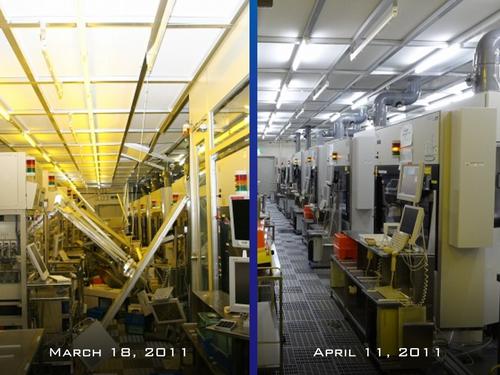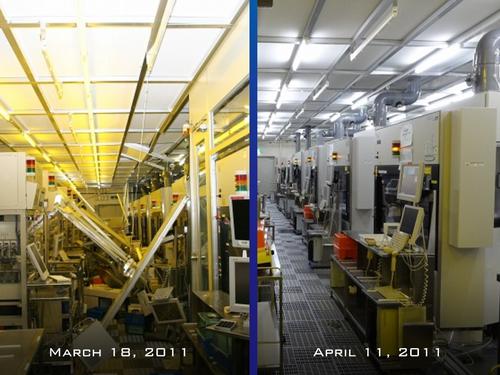Renesas Recounts Japan Earthquake Recovery
October 5, 2011

If you're a manufacturer and your most important factory is crippled by a natural disaster, what do you do?
That was the problem facing Renesas Electronics last March, in the wake of Japan's mammoth, 9.0-level earthquake. At the company's Naka Plant 70 miles northeast of Tokyo, electrical and gas lines were severed. Clean room equipment was tossed about. To make matters worse, replacement machinery was scarce because the facility was difficult to reach. Trains were down. Gasoline was unavailable.
"Getting equipment to Naka was a job in itself," noted Renesas's chief operating officer, Ali Sebt, in an interview with Design News.

Renesas solved the problem, however, partially through the spirit of team work that inevitably follows a natural disaster. Suppliers and customers who were trapped at the plant volunteered to help, since returning home was not an option. They stayed in dorms on the Renesas campus and pitched in, even when those dorms had no running water. Within 20 days, the wafer fab's equipment was back in place and within three months, it was running. In September, the Naka plant reached 90 percent of its original capacity.
Throughout the recovery period, Renesas also communicated with customers around the world. They called many on a daily basis, giving them real-time updates on the re-building of the fab. They pulled parts from inventory wherever possible and provided similar "superset" microcontrollers when direct replacements weren't available. In some cases, they also shifted manufacturing from Naka to so-called "dual fabs" in Singapore and Taiwan.
"What saved us was a combination of communications and 'dual-fab' or 'multi-fab' strategies," Sebt told us.
Still, Renesas engineers are now convinced they'll do better if it ever happens again. Ultimately, they hope to reduce the restoration period to just three months.
To accomplish that, the company has created a "continuity plan" that includes several key strategies:
Keep inventory ready. During a so-called "allocation period" (when demand is high), most chipmakers let inventory drop. Renesas believes that's a mistake. "The lesson we learned is that when the economy is hot and demand is high, you should still maintain a healthy inventory to recover from a natural disaster," Sept said.
Partner with customers. A multi-fab strategy -- wherein manufacturing can be shifted to another factory -- is critical, but not always possible. When it isn't, especially in the case of customers who want application-specific ICs (ASICs), Renesas plans to work with them on a "fab-ready" scheme. "If a customer is willing to work with us to build masks for their ASICs at an alternate fab, then it becomes fab-ready. So if the primary fab goes down, the masks are already approved and qualified at the other fab."
Establish a risk strategy. Renesas will now tell its customers where their devices fit within a three-level risk strategy. At the first level, multi-fabs will make it possible to supply devices in three months. At the second, Renesas will use the aforementioned "fab-ready" strategy. If customers are employing an older fabrication process, however, Renesas will go to the third level and make inventory available in advance. "Customers love it. In some cases, they're already going to their other suppliers and asking, 'What's your continuity plan?' "
The bottom line, according to Sebt, is that natural disasters needn't cripple manufacturers. Using inventory management of finished goods and wafer stocks, and by having alternate factories ready and waiting, chipmakers can reduce their restoration time.
"It's very unfortunate that we suffered as we did," Sebt told us. "But this gave us a priceless lesson-learned."
About the Author(s)
You May Also Like



